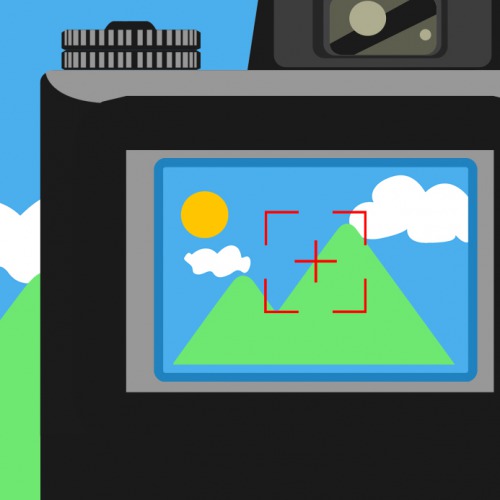
Other than seeing beautiful destinations, meeting new people, and eating food; travel photography is one of the most fun parts of traveling. You do not need to be a professional photographer to capture the beauty of objects, people, and places around the world. It doesn’t matter whether you are using a simple phone camera or a high-quality fancy camera, clicking pictures of your experiences is all about capturing moments.
Travel photos bring back thousands of memories and take us back to the adventure and the places we have wandered. But in most collections of vacation and travel photos, only a precious few of the photos are the very best shots. These photos are somehow more enduring or more interesting, or that best capture the spirit and sensation of the trip. What is it that keeps these photos from the dustbin of our traveling history? Often they are simply better photographs. That is, the “keeper” photo isn’t of a favorite person, place, or activity — it is better composed, better lit, and thus simply more visually interesting than the run-of-the-mill vacation snapshot. So What can we do to get better travel photos?
Following is a collection of low- and no-tech tips to help you improve your travel photos on and after your next trip.
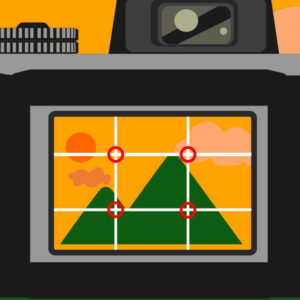
Leading Lines Leading lines is a compositional technique where the viewer’s attention is drawn to lines that lead to the main subject of the image. A leading line paves an easy path for the eye to follow through different elements of a photo. Leading lines are all around us in cities and in nature. Your job is to find them and arrange them in your photograph so that they lead toward the object, place, or person you want to focus on. Human-made objects that work as leading lines are roads, bridges, fences, broadways, bricks, buildings; and natural things that work as leading lines are rivers, waves, sand dunes, sunrays, stones, etc. Leading lines refer to anything that is in a row and gives attention to your choice of focus.
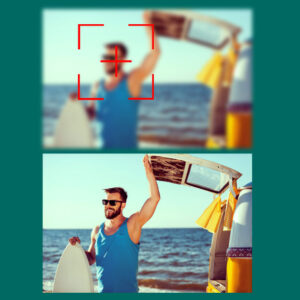
Focus – Defocus technique has been used by professional photographers for many decades. They are used to a dramatic effect on objects and figures by blurring the background (The Bokeh Effect). Generally, this type of work takes a lot of precision and time. Today most smartphones have this effect named as the “Portrait Mode” or “Live Focus”, where you can blur out the background or foreground and change the focus point and blur accordingly. You can also achieve this effect via editing, and in a much more controlled manner than while taking the picture.
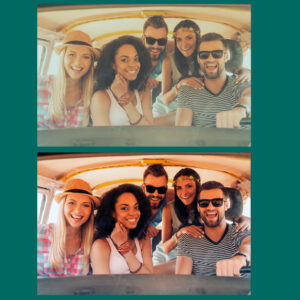
Colors are the most important element of a photograph. Sometimes your photo may be dull or the quality of it might be compromised due to bad lighting. Color Correcting is an editing technique that helps you to improve your bad pictures. We can adjust image color in all sorts of ways, from changing the overall “warmth” of the image (how blue or yellow it appears), to individually changing the hue and saturation of specific colors inside of an image. You can edit your pictures very easily with built-in presets on editing software such as Album Xpress Suite.

Tilting is used in photography is similar to someone raising or lowering their head to look up or down. This is used in miniature photography, but this effect in travel photography is used to capture a particular scene in a certain direction. The Tilt Mode allows us to make the photos look more broad and real. Using the Rotate tool can be perfect for photos where the camera angle needs some slight correcting. Photos can easily be straightened or rotated in 90-degree increments while editing, to get them one step closer to perfection.
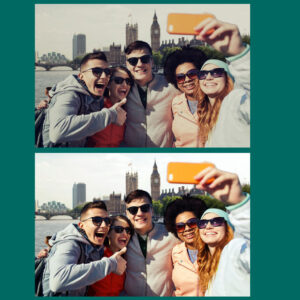
It is not a secret that good light = good pictures. Good lighting can make a simple object look glorious. Natural light is one of the best tools for good photography. Most photographers love to take photographs in the Golden Hour. This is around sunrise, sunset, and the blue hour, and taking pictures during this time can create images with wonderful colors. In many cases, you will likely be dealing with indoor lighting and may even use a flash. So before you take a single photo, look around and analyze your location. This will help you understand how you can harness the natural light around you. This is also a very easy fix during the editing process, wherein you can brighten up and make your pictures more visible with a couple of clicks.
Download the Album Xpress Suite and completely transform and preserve your precious travel memories.